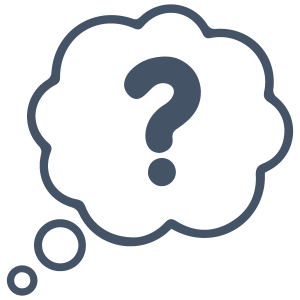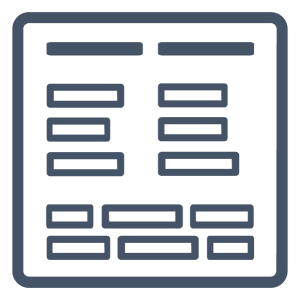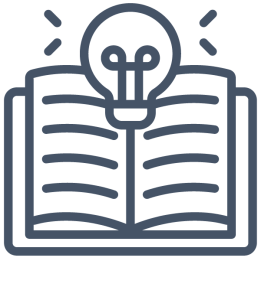Week 2: Active reading

Overview
This week we explore strategies for reading academic (research) articles.
As previously defined an active reader engages with a source by asking questions that support the interpretation, analysis, and evaluation of the data and information presented in a source.
According to Sun (2020), passive and active reading are very different strategies for engaging with sources. Here is a comparison of some of the differences between the two approaches to reading sources.
Passive reading
- Obedient purposelessness
- Uncritical, blind trust in authorities
- Read every sentence; inefficient
- Little understanding of the rationale & experimental design
Active reading
- Reading with questions in mind
- Regard authors as respected but not infallible sources of information
- Focused, highly selective & more efficient
- Deep understanding of the rational & [research] design
Read strategically by focusing on elements of the source structure (e.g., abstract, introduction and methods sections) in order to efficiently grasp key concepts, arguments, and outcomes. (Sun, 2020, pp. 1422.)
Peer-reviewed articles can vary in format, depending on the disciplinary nature of the research. An author’s discipline determines topics, research questions, methods, and how research resutts are disseminate.
Nonetheless, academic or scholarly articles (typically peer-reviewed) tend to include the following information:
- Purpose of the research
- Scope, i.e., the parameters of the problem being explored such as population, geographic location, and time period
- Research question being asked
- Thesis or main argument
- Method, how the evidence has been generated
- Outcomes, the results of the research
If a reader can identify these components, they will be able to understand the the essential nature and relevance or value of the research.
Annotating is a strategy for identify and highlighting this information–a form of notetaking and is useful to do when pre-reading as well as when close reading an article.
References
Sun, T. (2020). Active versus passive reading: how to read scientific papers? Natural Science Review, 7(9), pp. 1422-1427).
Readings
Note: Access the written materials (e.g., academic articles) in Brightspace via the Tools menu. The Library Course Reserves team has cleared these materials for copyright and there is not additional fee to access.
Core readings and videos (all groups)
Introductory video: Brightspace
Bullock, R., Brody, M., & Weinger, F. (2026). The little seagull handbook. Fifth edition. W.W, Norton & Company.
- Read W-3: Reading Strategies
- InQuizitive: “Critical Reading Strategies
Charalampous, A., & Darra, M. (2024). The effect of teacher’s feedback on student academic achievement: A literature review. Journal of Education and Learning, 14(1), 42. https://doi.org/10.5539/jel.v14n1p42
Attridge Bufton, M. (2025). Anatomy of an academic article. (Ares).
Yancy McGuire, S. (2018). Teach yourself how to learn. Strategies you can use to ace any course at any level. Stylus.
- Chapter 5, pp. 40 – 51
Reading Club: group readings
Group 1
GVSU Libraries Instruction. (2019, Nov. 18). Annotating an article [Video]. Youtube. https://youtu.be/JtRGUNo2pck (5:29 minutes)
Group 2
Booth, W. C., Colomb, G. G., Williams, J. M., Bizup, J., & Fitzgerald, W. T. (2024). The craft of research (5th ed.). University of Chicago Press.
- Chapter 4: Engaging sources
Group 3
Booth, W. C., Colomb, G. G., Williams, J. M., Bizup, J., & Fitzgerald, W. T. (2024). The craft of research (5th ed.). University of Chicago Press.
- Introduction: Becoming a researcher
Groups 4 & 5
Booth, W. C., Colomb, G. G., Williams, J. M., Bizup, J., & Fitzgerald, W. T. (2024). The craft of research (5th ed.). University of Chicago Press.
Prologue: Planning your project—An overview
Before class activities
 Key questions to ask while reading and watching
Key questions to ask while reading and watching
- What is the process should I use when reading assigned materials in general to ensure that I understand the key concepts and arguments the author is making?
- When I read academic articles, what elements do I read for “high information content”, such as the main argument, how the author(s) have gathered their evidence , and their conclusions?
- What is the benefit of annotating or marking up assigned readings? What process do I use to markup materials so that these notes reinforce key concepts and arguments?
 “Pile of words”: Group and label key concepts
“Pile of words”: Group and label key concepts
Organize the words below into two lists of similar terms and label each list (include a definition for each label).
Remember: You may already understand some of these ideas relatively well and others may be new to you. Look up (e.g., in a dictionary or encyclopedia) the unfamiliar concepts in order to create your lists.
Make note of your reasons for grouping the ideas together as you will share them in class. These are self-paced individual activities, for which there are no right or wrong answers. The instructor will not grade this work.
 Predict a learning outcome
Predict a learning outcome
Reading Club activities
Share the results of your pre-class activities before class activities and respond to additional prompts provided by your instructor(s).
After class activities
After class, annotate each reading for key ideas. For videos, you can annotate the transcript.
Summarize the author’s key ideas from each reading. Highlight the following information:
- Purpose of the reading;
- Scope (the extent of the study);
- Thesis (the main argument[s]);
- Method (research method if applicable);
- Outcome(s) and conclusion.
Respond to this statement about the readings: do you agree or disagree with the statement and why?
“What happens when you read? Well, if you’re like most people, you begin reading and all is well until your mind starts to wander … At this point, what do you usually do? if you’re like most people, you go back and re-read the text from the beginning but this time you concentrate harder …” (Yancy McGuire, 2018, pp. 42)
Did these readings provide any inspiration or insights you can use in this or any of your other classes? If yes, what is the inspiration and/or what are the insights?

